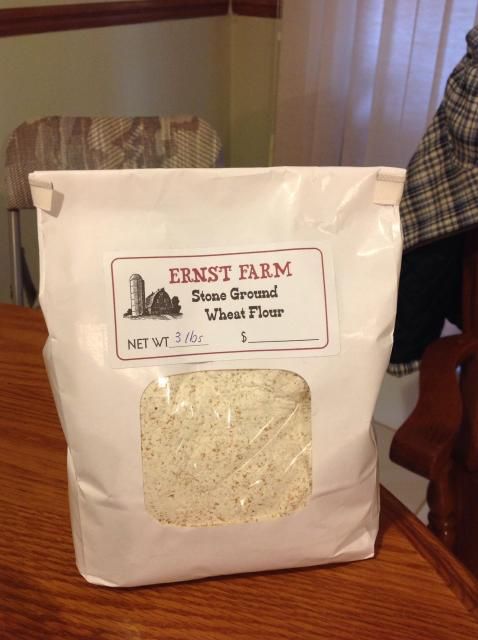So life got busy, it got hot outside, and I got lazy about updating. Here's the last several weeks, roughly condensed into one blog post.
FWSY's Overnight Country Brown. I made this as a bit of a lark, as I needed to return the book to the library and wanted to try something out of it first. This was my ugliest loaf so far; it spread quite a bit while proofing (I need to learn how to contain a high hydration loaf with towels) and transferring it to the oven created a flat, lumpy thing. When it was done baking, the crust was tough enough that my three year old pretty much gave up on it (I also need to figure out if there's anything I can do to bake artisan loaves with a less tough crust without fundamentally altering the recipe). That said, it was my tastiest loaf to date by far. It had a nice sourdough tang, with a more complex underlying flavor that was delicious. For some reason, the only picture I took was of the proofing dough.
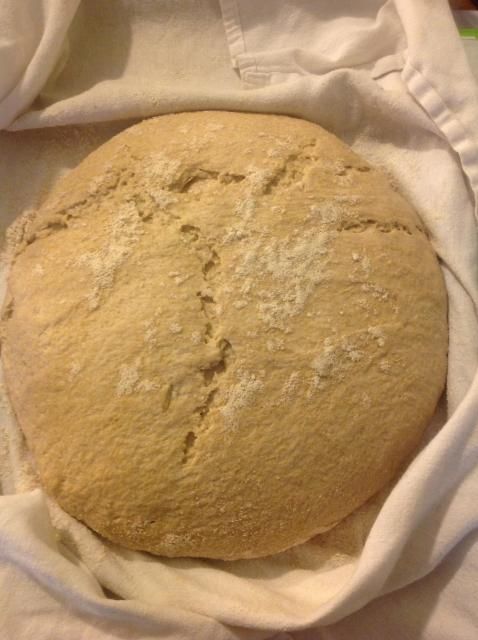
Sourdough bread from The Nourished Kitchen. This recipe called for ingredients measured by volume, not weight. I don't know if there was a problem there, or if I made a mistake, but this baked a brick. I seriously believe I could have broken a window with this loaf. I was a little sad, since I used the last of my delicious spelt flour for it, but such is the price of experimentation. No picture.
Tartine's Ode to Bourdin. I'm still working on this, and have had a recurrence of the cavernous central holes. I'm OK with that, though, since I think I finally figured out something that is probably obvious to everyone else. I tried to shape it gently to avoid deflating it (as per the recipe), and was surprised when it seemed ready to bake significantly sooner than expected (according to the finger poke test). After baking and finding the large holes, I realized that if I had failed to remove that air, then of course the dough would seem ready faster. Next time I'm going to deflate thoroughly and see a) if it takes significantly longer to rise, and b) whether or not that defeats the holes.
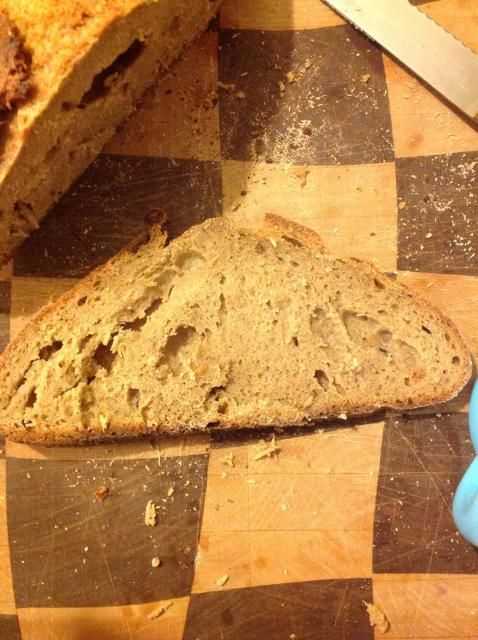
Barley cheddar cheese sables, also from Tartine No. 3. I measured ingredients by weight and I'm glad I did; if I was going off of volume I would have had a lot less cheese in these. I rolled them in sesame seeds and cumin seeds only, chilled for an hour and sliced with a freshly sharpened knife. Next time, I will try to form the roll more tightly and chill for longer, perhaps even partially freezing the roll. I was not able to slice them as thinly as I wanted. These were delicious, and netted the following comments from my husband:
"These are good. Can we have these for dinner?" (I explained that I'd baked them to send some to my brother as an extremely belated birthday present.) "How many do you need?" And then later, "These are diabolically good." So I will be making them again for sure. Highly recommended.
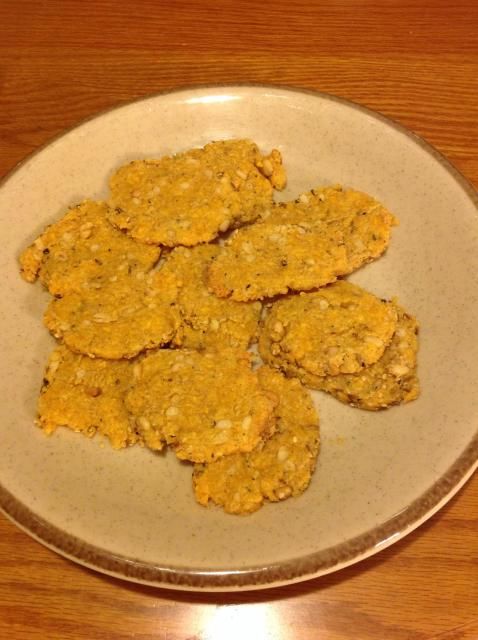
Canal House chocolate chip cookies. I made these to send some to my brother as well. My usual chocolate chip cookies are full of oatmeal and much thicker, so these were a big departure. Aside from ignoring the instructions to place them on the baking sheet 4" apart and getting to carve my own cookies from the sheet of cookie that resulted (which was clearly my fault), these were great. Chewy, chocolate-y, with a nice caramel-y flavor. I did sub white whole wheat flour, since I don't keep all purpose around. Recipe here: http://www.alexandracooks.com/2013/07/10/canal-house-chocolate-chip-cookies/ And here is a picture of the one circular cookie I got:
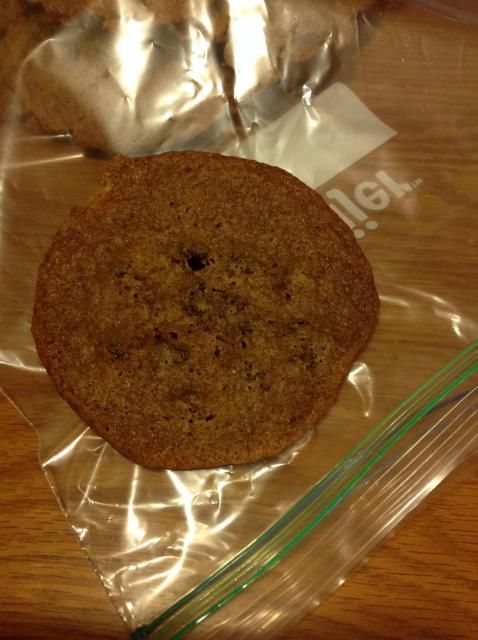
And then I took a break from artisan loaves and baked something from my childhood. I made a few loaves of my mom's whole wheat sandwich bread. My husband's first comment when trying it was, "this is different than what I've been eating lately," and it sure is. It's pretty enriched, much lighter, has a tender crust, is not sourdough, doesn't take multiple days to make, and bakes in a loaf pan. I had some fun making the dough with the three year old. We did some observations of the yeast while it was proofing. We watched it soak up liquid and sink to the bottom (a glass bowl was handy for watching yeast sinking/rising). We watched it rise again, looking different this time. Bob, my sourdough culture, was handy for talking about why the yeast was rising, since it's easy to see the bubbles on the sides of the jar and in the airlock. The proofing yeast formed a bumpy island (my son said it looked like land), and smelled differently than in the beginning. It also made crackly noises when we disturbed the yeast cake and popped bubbles. And then he helped me stir in the flour and knead the dough, which is an excellent activity for blowing off preschooler energy. He makes a good assistant baker. Yeast island (with a maraca in the background, baking with children is fun):
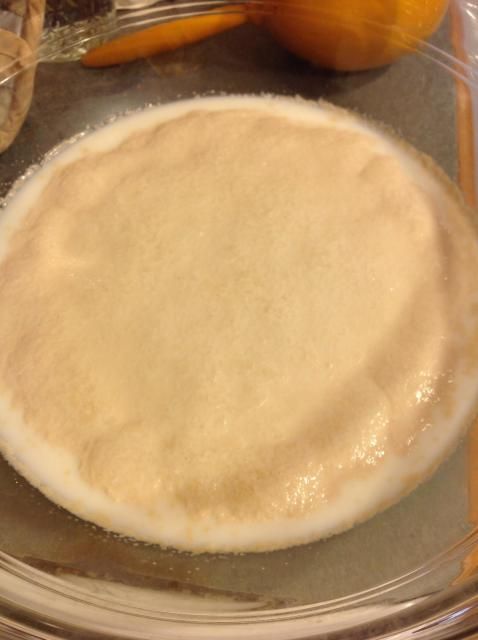
With my mom's permission, here is her recipe (with my notes on what I tweaked at the end):
Warm 1.5 cups buttermilk to 120 degrees. Add 1.5 cups warm water, 1-2 T instant yeast and 1/8 cup sugar. Allow to proof. Add 1.5 T salt and 1/4-1/2 cup margarine.
Stir in 4 cups whole wheat flour (1 cup at a time). Stir in at least 3 cups of white hard wheat bread flour (add flour until the dough becomes hard to stir and is pulling away from the sides of the bowl). Let rise 30 min. Stir down and let rise another 30 min. Knead (will need lots of flour) and let rise about 1 hour. Shape into four loaves, place into well greased loaf pans and let rise until doubled, about 1 hour. Brush with egg white and sprinkle with sesame seeds, if desired. Bake in a 375 degree oven for 35 min. Turn out promptly.
My loaves: I used 1 T yeast, and I used butter since we don't allow margarine in this house. We only have whole wheat flour, so I used 4 cups of BRM whole wheat and 2 cups of KA white whole wheat (which seemed to be all that it needed at the time); I did add a bit less than 1/4 cup vital wheat gluten to compensate for not using bread flour. I greased the heck out of the loaf pans, since my first batch stuck. I also only made two loaves, since I like having nice tall loaves and otherwise they seem kinda small. Just before going in the oven:
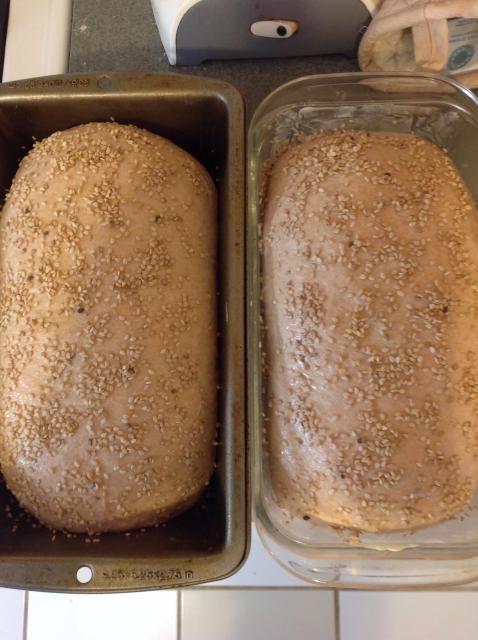
End result:
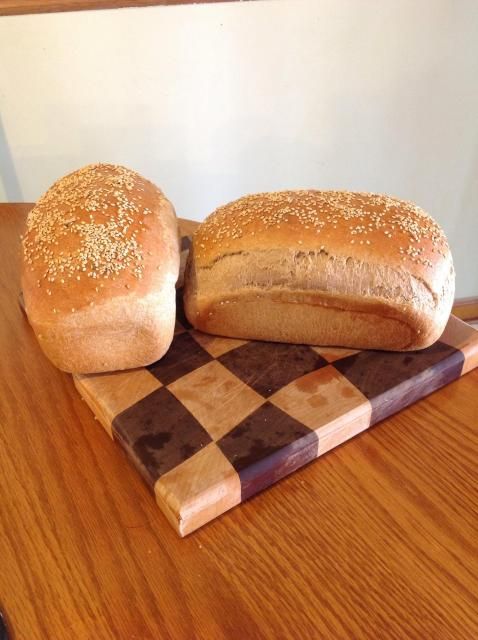
Next up, I need to figure out what to do with this lovely, which I found at a grocery that specializes in locally grown foods. I'm not sure what yet, but it'll probably be good.
